38 nutrition labels list the energy content of food in
How to calculate the Energy available from foods To calculate the energy available from a food, multiply the number of grams of carbohydrate, protein, and fat by 4,4, and 9, respectively. Then add the results together. For example, 1 slice of bread with a tablespoon of peanut butter on it contains 16 grams carbohydrate, 7 grams protein, and 9 grams fat : 16g carbohydrate x 4 kcal/g = 64 kca l New Nutrient Content Information Now Online - USDA This database is developed and supported by the Agricultural Research Service at USDA and provides information about food composition. With this database, you can search a food to see its nutrition content, including calories, fiber, vitamins, minerals, caffeine, and more. The FoodData Central website is available at this link: fdc.nal.usda.gov.
Federal Register :: Food Labeling: Revision of the Nutrition ... May 27, 2016 · The comment also stated that the 2012 IOM report on front-of-pack labeling (Ref. 2) found that “a lack of nutrition knowledge is a major barrier to effective use of the [Nutrition Facts label] and may actually lower the motivation of some consumers to use the nutrition information on the label,” and that “some racial groups . . . are less ...
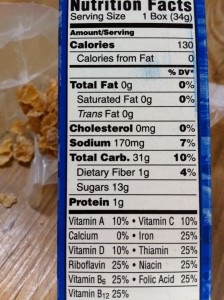
Nutrition labels list the energy content of food in
Food labels - NHS These labels provide information on the number of grams of fat, saturated fat, sugars and salt, and the amount of energy (in kJ and kcal) in a serving or portion of the food. But be aware that the manufacturer's idea of a portion may be different from yours. Some front-of-pack nutrition labels also provide information about reference intakes. Nutrition facts label - Wikipedia In 2011 the Chinese Ministry of Health released the National Food Safety Standard for Nutrition Labeling of Prepackaged Foods (GB 28050-2011). The core nutrients that must be on a label are: protein, fat, carbohydrate and sodium. Energy is noted in kJ. And all values must be per 100g/100ml. An example of a Chinese nutrition facts label Understanding food labels: portions, energy | Health24 However, many manufacturers still list the energy content of foods in calories (cal) or use both kJ and calories. Confusion arises when the label expresses the energy content in kcal (or kilo-calories). Energy contained in food is always expressed in kcal, but most manufacturers forget to use the 'k' in front of the 'cal' in the abbreviation.
Nutrition labels list the energy content of food in. How To Read Food and Beverage Labels | National Institute ... Or you can call the U.S. Department of Agriculture's Food and Nutrition Information Center at 301-504-5414. Understanding percent Daily Value (% DV) The percent Daily Value (% DV) tells how much a nutrient in a serving of the food or beverage contributes to a total daily 2,000-calorie diet. Food Labels | CDC The label breaks down the amount of calories, carbs, fat, fiber, protein, and vitamins per serving of the food, making it easier to compare the nutrition of similar products. Be sure to look at different brands of the same foods—nutrition information can differ a lot. Chapter 3: Calculation of The Energy Content of Foods ... Food labels, and in particular nutrition labelling, can help consumers identify the nutrient content of foods, compare different foods and make informed choices suitable for their individual needs. The amount and type of nutrition information currently required on food labels vary from country to country. Nutrition Labels Flashcards | Quizlet Nutrition Label Required on most packaged food in many countries Calories The amount of energy a food has. Total Fat The total amount of Saturated, unsaturated, and trans in each serving. Serving Size The amount you should eat for one serving. Servings per container The amount of servings in the food item. Percent of Daily Value
Food labels: a guide to reading nutrition labels - MyDr.com.au A food making a 'diet' claim must meet some criteria regarding the content of nutrients of public health significance (saturated fat, sugars and sodium) and must either have no more than 80 kJ/100 mL (for liquid foods) or 160 kJ/100 g (for solid foods) or must have at least 40% fewer kilojoules than the same quantity of a reference food. Nutrition labels: Finding out about the food you eat All information on the nutrition label is based on a specific amount of food called the serving size. When you compare products, ensure that the serving sizes are the same. When comparing foods, use percent daily values (% DV) to find out if a food has a little or a lot of a nutrient. Choose foods with lower amounts of total fat, saturated fat ... Codex Guidelines on Nutrition Labelling 3.4.2 Information on energy value should be expressed in kJ and kcal per 100 g or per 100 ml or per package if the package contains only a single portion. In addition, this information may be given per serving as quantified on the label or per portion provided that the number of portions contained in the package is stated. Food Labels | Nutrition.gov The U.S. Food and Drug Administration (FDA) has updated the Nutrition Facts label on packaged foods and beverages with a fresh design that will make it easier for you to make informed food choices that contribute to lifelong healthy eating habits.
Nutrition labelling | Food Standards Agency The repeated information may be provided in the following formats: per 100g/ml only per 100g/ml and per portion on a per portion basis only Energy must always be indicated per 100g/ml as a minimum.... How to Read the Nutrition Facts Label on Packaged Foods Carbs give your body energy faster than protein or fat does. If you have type 2 diabetes, you need to know the amount of carbs in a food so you can manage your blood sugar level. Ask your doctor ... Learn How the Nutrition Facts Label Can Help You Improve ... The Nutrition Facts label external icon on packaged foods is based on updated science and dietary recommendations external icon for Americans. Using the label can help you choose foods for a healthy diet. The label is required on all packaged foods made in the United States and imported from other countries. Nutrition Labels 101: What's Required? What's Optional ... The cholesterol listing on nutrition labels notes the cholesterol content of the food per serving in milligrams rounded to 5 mg increments. If the amount of cholesterol contained is less than 2 milligrams per serving, it can be stated as zero in the nutrition fact panel, or replaced with the statement "Not a significant source of cholesterol ...
Nutrition Labelling - Centre for Food Safety - Home Nutrition label must include the information on energy and seven nutrients specified for labelling (1+7), namely, protein, carbohydrates, total fat, saturated fatty acids, trans fatty acids, sodium and sugars. Furthermore, the nutrition label must list the amounts of any claimed nutrients.
Understanding Food Labels | The Nutrition Source | Harvard ... Under the Food Allergen Labeling and Consumer Protection Act of 2004, eight major food allergens—milk, fish, tree nuts, peanuts, shellfish, wheat, eggs, and soybeans—are required to be listed in a "contains" statement near the Ingredients list if present in a food. An example would be "contains wheat, milk, and soy."
10 Best + Free Nutrition Certification & Courses [2022 MAY ... Oct 02, 2021 · If you’re a professionals nutritionist or want to improve your nutrition in daily life, this list of classes from Udemy can help you. It offers multiple courses covering essential topics like nutrition, sports nutrition, dieting, and health coaching. The lessons are prepared by the best instructors of Udemy, like Akash Sehrawat, Felix Harder ...
Nutrient food labels Flashcards - Quizlet Start studying Nutrient food labels. Learn vocabulary, terms, and more with flashcards, games, and other study tools.
Nutritional Values For Common Foods And Products Highest caloric density foods Top Foods by Vitamin Vitamin A Thiamin Riboflavin Niacin Pantothenic acid Vitamin B6 Vitamin B12 Folate Vitamin C Vitamin D Vitamin E Vitamin K1 Betaine Choline Top Foods by Mineral Calcium, Ca Copper, Cu Fluoride, F Iron, Fe Magnesium, Mg Manganese, Mn Phosphorus, P Potassium, K Selenium, Se Sodium, Na Zinc, Zn
Energy in Food and Nutrition | Chemistry for Non-Majors Use the information in this nutrition facts label to determine the amount of Calories (Cal = kcal) and kilojoules (kJ) from fat, carbohydrates and protein in the snack mix. Step 1: List the known quantities and plan the problem . Known Energy per gram Fat = 9 kcal/g (Cal/g) Carbohydrate = 4 kcal/g (Cal/g) Protein = 4 kcal/g (Cal/g) Grams Fat = 11 g
How to Understand and Use the Nutrition Facts Label | FDA Feb 25, 2022 · Overview. The information in the main or top section (see #1-4) of the sample nutrition label (below) can vary with each food and beverage product; it contains product-specific information ...
Nutrition information panels - Food Standards Protein, fat, carbohydrate, dietary fibre and alcohol all provide energy (kilojoules). Protein Protein is essential for good health and is particularly important for children. Generally, people in developed countries eat enough protein to meet their requirements. Meat, poultry, fish, eggs, milk and cheese are animal sources of protein.
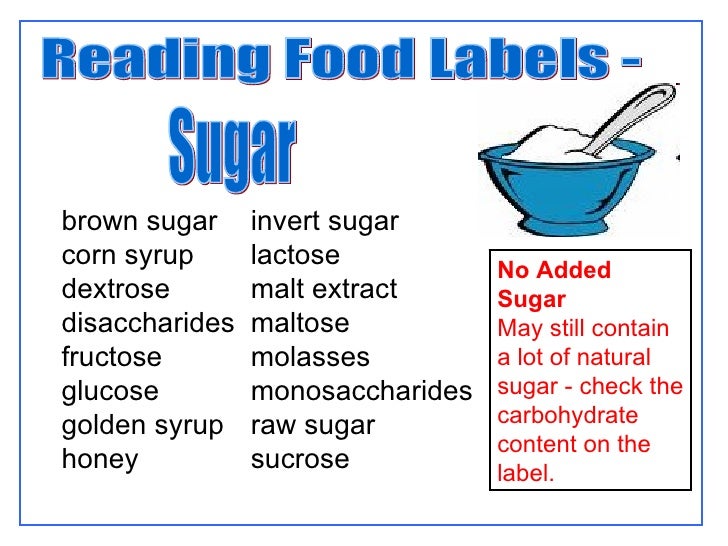
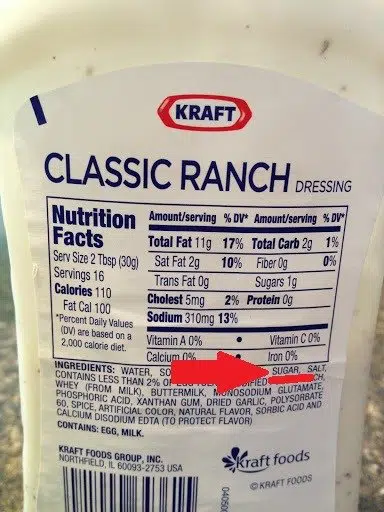

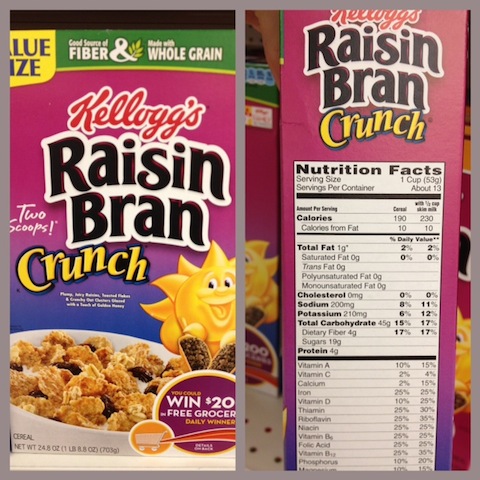

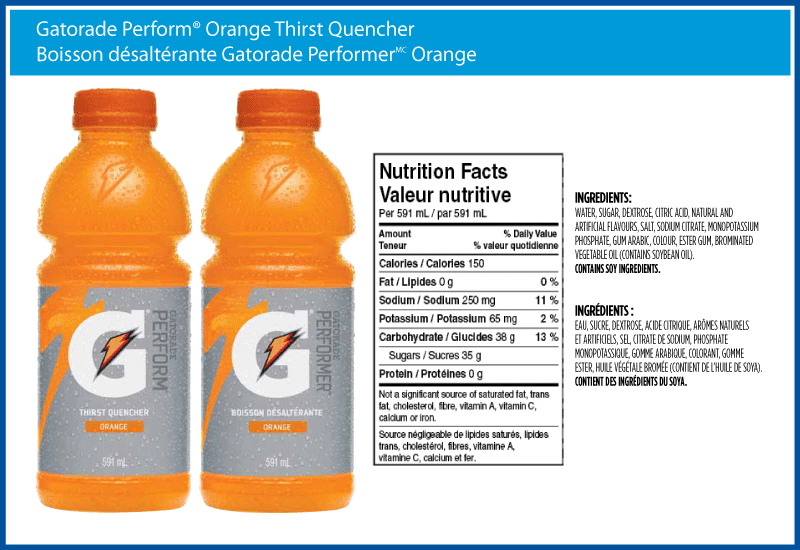
Post a Comment for "38 nutrition labels list the energy content of food in"